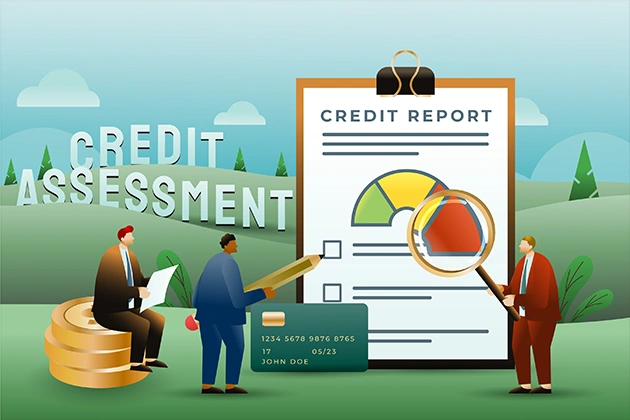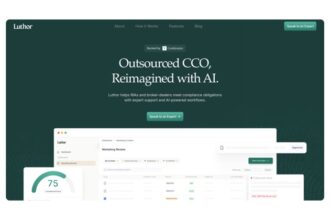Cash flow decisions define how modern businesses grow, scale, and compete. The choice between factoring and bank loans often determines whether a company maintains momentum or slows under financial pressure.
Both funding methods give CEOs access to working capital but through very different structures. Understanding their mechanics, benefits, and risks helps leaders choose the smarter financing path for their specific business realities.
What Is Factoring?
Factoring is a financing arrangement where a business sells its unpaid invoices to a third party, known as a factor, in exchange for immediate cash. Instead of waiting weeks or months for customer payments, companies get quick access to working capital.
The factor typically advances 70% to 90% of the invoice value upfront and then collects the full payment directly from the customer. Once the customer pays, the remaining balance is released to the business minus the factor’s fee.
This funding method is widely used in industries with long payment cycles such as manufacturing, logistics, and wholesale trade. By converting receivables into cash, factoring helps businesses cover expenses, pay employees, and invest in growth without taking on traditional debt.
What Are The Types Of Factoring?
- Recourse Factoring: Here, the business takes responsibility if a customer doesn’t pay. It’s usually cheaper because the risk stays with the company.
- Non-Recourse Factoring: In this case, the factor carries the risk of non-payment. Businesses prefer this when dealing with uncertain or new customers.
- Maturity Factoring: Instead of advancing money right away, the factor pays the business on the invoice’s due date. This works best for companies that want secure collection but don’t need immediate cash.
- Advance Factoring: The factor provides a portion of the invoice value upfront and releases the rest after collecting payment. Many small businesses use this to bridge short-term cash gaps.
- Domestic Factoring: Both the business and its customers are in the same country. It’s straightforward and avoids international complications.
- Export Factoring: This is designed for international trade, where the factor manages cross-border invoices and protects against foreign payment risks.
What Are The Advantages And Disadvantages Of Factoring?
| Advantages of Factoring | Disadvantages of Factoring |
| Provides immediate cash flow | Higher cost compared to bank loans |
| Approval based on customer credit, not business credit | Dependence on customer payment reliability |
| Scales with sales and invoices | Possible negative perception in some industries |
| Reduces burden of collections | Risk of customer disputes delaying payment |
| Supports businesses with weak credit history | Fees increase with longer payment cycles |
What Is a Bank Loan?
A bank loan is a financing arrangement where a business borrows a fixed amount of money from a financial institution. The company agrees to repay the loan over a set period with interest.
Bank loans give companies access to larger sums of capital for expansion, equipment, or working capital. Approval depends on the business’s credit history, collateral, and financial strength.
What Are The Types of Bank Loans?
- Term Loans: A lump sum borrowed and repaid over a fixed schedule, often used for large purchases or expansion.
- Revolving Credit Lines: Flexible borrowing where businesses draw funds as needed up to a set limit.
- SBA Loans: Government-backed loans with favorable terms for small and medium-sized businesses.
- Equipment Financing: Loans specifically used for purchasing machinery or vehicles.
- Commercial Real Estate Loans: Financing for buying, building, or renovating property.
What Are The Advantages and Disadvantages of Bank Loans?
| Advantages of Bank Loans | Disadvantages of Bank Loans |
| Lower cost of capital compared to factoring | Strict eligibility requirements |
| Predictable repayment schedules | Collateral often required |
| Builds business credit history | Repayments required even during downturns |
| Suitable for large, long-term investments | Lengthy approval and documentation process |
| Fixed interest rates provide stability | Limited flexibility once terms are set |
What Are The Key Differences Between Factoring And Bank Loans?
Qualification Requirements
Factoring approval depends on the creditworthiness of the customers who owe the invoices. Bank loans depend on the financial history, credit score, and collateral strength of the business itself.
Speed of Funding
Factoring provides quick access to cash, often within 24 to 72 hours after submitting invoices. Bank loans require extensive paperwork and underwriting, which can delay funding for weeks or even months.
Cost of Financing
Factoring fees are charged as a percentage of invoice value, which makes them higher than typical loan interest rates. Bank loans usually carry lower annual interest rates but include fixed repayment obligations.
Risk Allocation
In non-recourse factoring, the factor assumes the risk if customers fail to pay. In bank loans, the borrower carries full repayment responsibility regardless of customer behavior.
Flexibility of Use
Factoring grows in direct proportion to sales since more invoices generate more funding. Bank loans remain fixed amounts that do not expand even when revenue increases.
Administrative Burden
Factoring companies often manage collections and reduce workload for the business. Bank loans require businesses to manage their own receivables alongside repayment schedules.
Industry Fit
Factoring suits industries with long payment cycles like logistics, wholesale, and manufacturing. Bank loans fit capital-heavy industries where long-term planning dominates, such as construction and real estate.
Factoring vs Bank Loans: Which is Smarter for Modern CEOs?
When Factoring is Smarter
Factoring is smarter for CEOs managing businesses with rapid growth, long invoice cycles, or weaker credit histories. It provides quick liquidity and scales in direct proportion to sales, keeping operations moving without debt pressure.
When Bank Loans are Smarter
Bank loans are smarter for CEOs running established companies with strong credit and stable revenues. They deliver lower-cost capital, predictable repayment schedules, and long-term financial security.
Why a Balanced Approach Wins
Many CEOs gain the most value by using both options strategically. Factoring covers short-term cash flow needs, while bank loans fund larger investments that drive long-term growth.
Final Verdict
Factoring and bank loans both give CEOs access to working capital, but they serve very different purposes. Factoring supports agility by turning receivables into cash, while bank loans deliver stability through structured long-term financing.
The smarter choice depends on the company’s stage, industry, and financial position. Fast-growing firms with long invoice cycles lean toward factoring, while established businesses with strong credit often benefit more from bank loans.
Many modern CEOs find that combining both creates the strongest financial foundation. Using factoring for short-term liquidity and bank loans for long-term investments balances flexibility with security.










